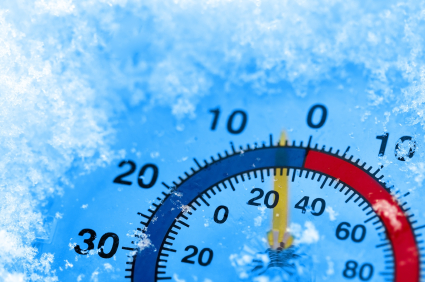The Column Before the Storm
How Did the Son of a Dairy Farmer Revolutionize the Way We Cope with Winter Storms?
We each owe Arthur Sicard, the son of a dairy farmer, a debt of gratitude.
Without him, our storm-filled, bitterly-cold winter would have been even more unbearable, if that were possible. But at only eighteen years old, Sicard saw a piece of farming equipment in action, and conceived of the idea for a piece of machinery that would revolutionize the way we deal with winter.
Arthur Sicard invented the snow blower.
Sicard was reportedly ridiculed by others when his first prototype failed, yet he persisted to refine it for 31 years until he finally produced a successfully snow blower in 1925 (rumor has it that he later invented the Ab Master after backing into an electrified fence, but since six-pack abs hadn’t been invented by advertising executives, it didn’t sell).
His snow-throwing invention was nothing to sneeze at: it could “throw soft, hard, or packed snow over ninety feet away with great accuracy,” according to the Sicard company website. Over ninety feet? I would have wanted Arthur on my side in a snowball fight.
Today, the company that the Canadian inventor founded continues to serve as one of the leading manufacturers of large snow blowers, runway sweepers (for clearing airports, not fashion shows), and related snow-removal devices (the Abmaster snowshovel, perhaps?).
As I write this column, it is during the brief lull between back-to-back snowstorms broken up only by bone-chilling record low temperatures. The next barrage of white stuff to perform an aerial assault on the area is just minutes from falling in Lititz.
One thing’s for sure: when Punxsutawney Phil predicts six more weeks of winter, he means six more weeks of WINTER.
While I have never been one to doubt the famed woodchuck’s forecasting abilities, I am now a more of a believer than I have ever been.
In fact, I would like to arrange for Punxsutawney Phil to attend Al Gore’s next Global Warming Summit. As snow piles up on streets around town, it seems as though I am surrounded by the very glaciers that Gore loses sleep over. “Dear Al, the glaciers are not disappearing; they have simply relocated to Lititz, one of America’s coolest towns.” Our new motto: “Come for the Wilbur Buds, take the glaciers with you.” Perhaps next year visitors to the Fire and Ice Festival could each take home souvenir snowballs.
Here is some snow trivia to ponder:
- No two snow shovels are alike.
- The snow shovel with the angled handle was invented by a guy who backed over his straight-handled snow shovel. (He tried to save face with his wife by claiming it was a new invention. He was then reluctantly forced to market the item and found surprising success.)
- When a snowstorm is expected in France, the French flock to the stores and buys the ingredients for American hamburgers.
- A snowstorm earlier this week brought white-out blizzard conditions.
- According to the National Snow and Ice Data Center website (which I never knew existed until I was writing this column), “German settlers in Iowa originally coined the word “blizzard”, coming from the word blitzartig, meaning “lightninglike.” I believe the Germans also coined the term “condominium” from the word that means “escape to Florida.”
The National Weather Service defines a blizzard as “large amounts of falling or blowing snow with winds in excess of 35 mph and visibility of less than 1/4 of a mile for an extended period of time (greater than 3 hours).”
As a parent, I define a blizzard differently: You know it’s a blizzard when your teens show up at home, the fridge suddenly empties, and the snow shovels mysteriously disappear right before you ask the kids to clear the driveway.
I need to run to the store now to stock up before the storm. I’m buying milk, bread, eggs, and three brand new shovels that I’m hiding from my kids.











